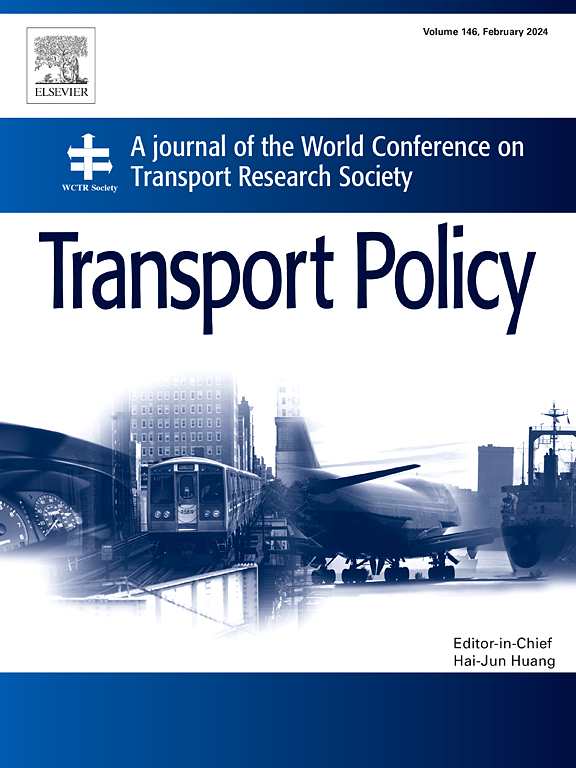Port ship congestion and Port-oriented cities air pollution: the role of machine learning models in transportation environmental governance
IF 6.3
2区 工程技术
Q1 ECONOMICS
引用次数: 0
Abstract
Port-oriented cities worldwide are facing significant challenges due to port congestion and environmental concerns. However, research quantifying the relationship between port congestion and air pollution in port towns is limited. This study used deep learning predictive models to examine the influence of port congestion on particulate matter (PM) levels within port-oriented cities. The study centered on Shanghai, a major Chinese port city, analyzing 30,590 records over six years (January 1, 2017, to December 30, 2022) on PM concentrations, meteorological conditions, and port congestion. This study evaluated three deep learning models (LSTM, BILSTM, and CNN-LSTM) for long-term time series forecasting using two datasets: one with air pollutants and meteorological data, and another adding port congestion data. Performance was assessed using MAE, MSE, and RMSE metrics. The results show that the CNN-LSTM models exhibit the best prediction performance and all models improve when port congestion data is included. This indicates that air pollution in port-oriented cities is influenced by port congestion dynamics. Specifically, This study elucidates the intricate relationship between port congestion and air pollution in port-oriented cities through machine learning modeling. These findings offer significant decision-making assistance for shipping businesses and policymakers regarding port-oriented cities strategic planning and environmental risk management.
港口船舶拥堵与港口城市空气污染:机器学习模型在交通环境治理中的作用
由于港口拥挤和环境问题,世界各地的港口导向型城市都面临着重大挑战。然而,量化港口拥堵与港口城镇空气污染关系的研究有限。本研究使用深度学习预测模型来研究港口拥堵对港口城市颗粒物(PM)水平的影响。该研究以中国主要港口城市上海为中心,分析了6年来(2017年1月1日至2022年12月30日)的30590份PM浓度、气象条件和港口拥堵记录。本研究使用两个数据集评估了三种深度学习模型(LSTM、BILSTM和CNN-LSTM)的长期时间序列预测,其中一个数据集包含空气污染物和气象数据,另一个数据集添加了港口拥堵数据。使用MAE、MSE和RMSE指标评估性能。结果表明,CNN-LSTM模型具有最佳的预测性能,并且在包含端口拥塞数据时,所有模型都得到了改进。这表明港口导向型城市的空气污染受到港口拥堵动态的影响。具体而言,本研究通过机器学习建模阐明了港口导向城市的港口拥堵与空气污染之间的复杂关系。这些发现为航运企业和政策制定者在港口城市战略规划和环境风险管理方面提供了重要的决策帮助。
本文章由计算机程序翻译,如有差异,请以英文原文为准。
求助全文
约1分钟内获得全文
求助全文
来源期刊

Transport Policy
Multiple-
CiteScore
12.10
自引率
10.30%
发文量
282
期刊介绍:
Transport Policy is an international journal aimed at bridging the gap between theory and practice in transport. Its subject areas reflect the concerns of policymakers in government, industry, voluntary organisations and the public at large, providing independent, original and rigorous analysis to understand how policy decisions have been taken, monitor their effects, and suggest how they may be improved. The journal treats the transport sector comprehensively, and in the context of other sectors including energy, housing, industry and planning. All modes are covered: land, sea and air; road and rail; public and private; motorised and non-motorised; passenger and freight.
 求助内容:
求助内容: 应助结果提醒方式:
应助结果提醒方式:


